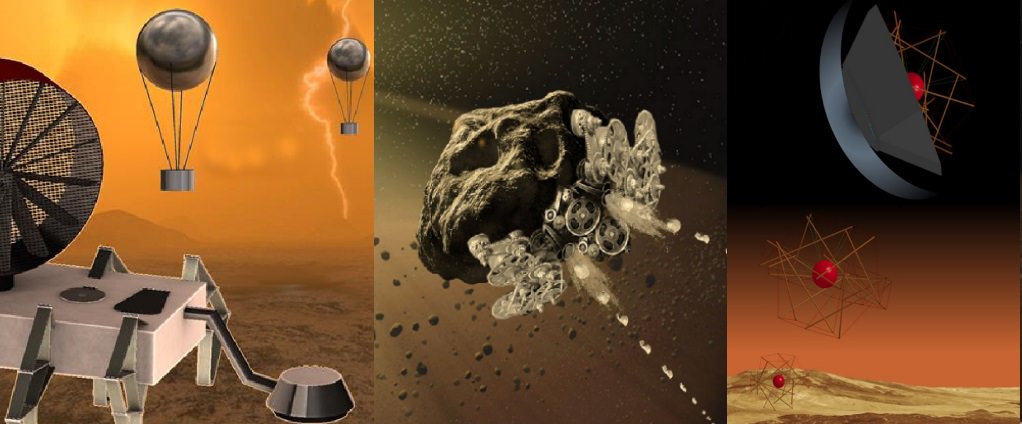Welcome, come in to the 468th and 469th Carnival of Space – we combined these two since it’s summer break for a lot of folks! The Carnival is a community of space science and astronomy writers and bloggers, who submit their best work each week for your benefit. I’m Susie Murph, part of the team at Universe Today and CosmoQuest. So now, on to this week’s stories!
Continue reading “Carnival of Space #468-469”
Hold On To Your Jaw. Pluto Extreme Close Up Best Yet
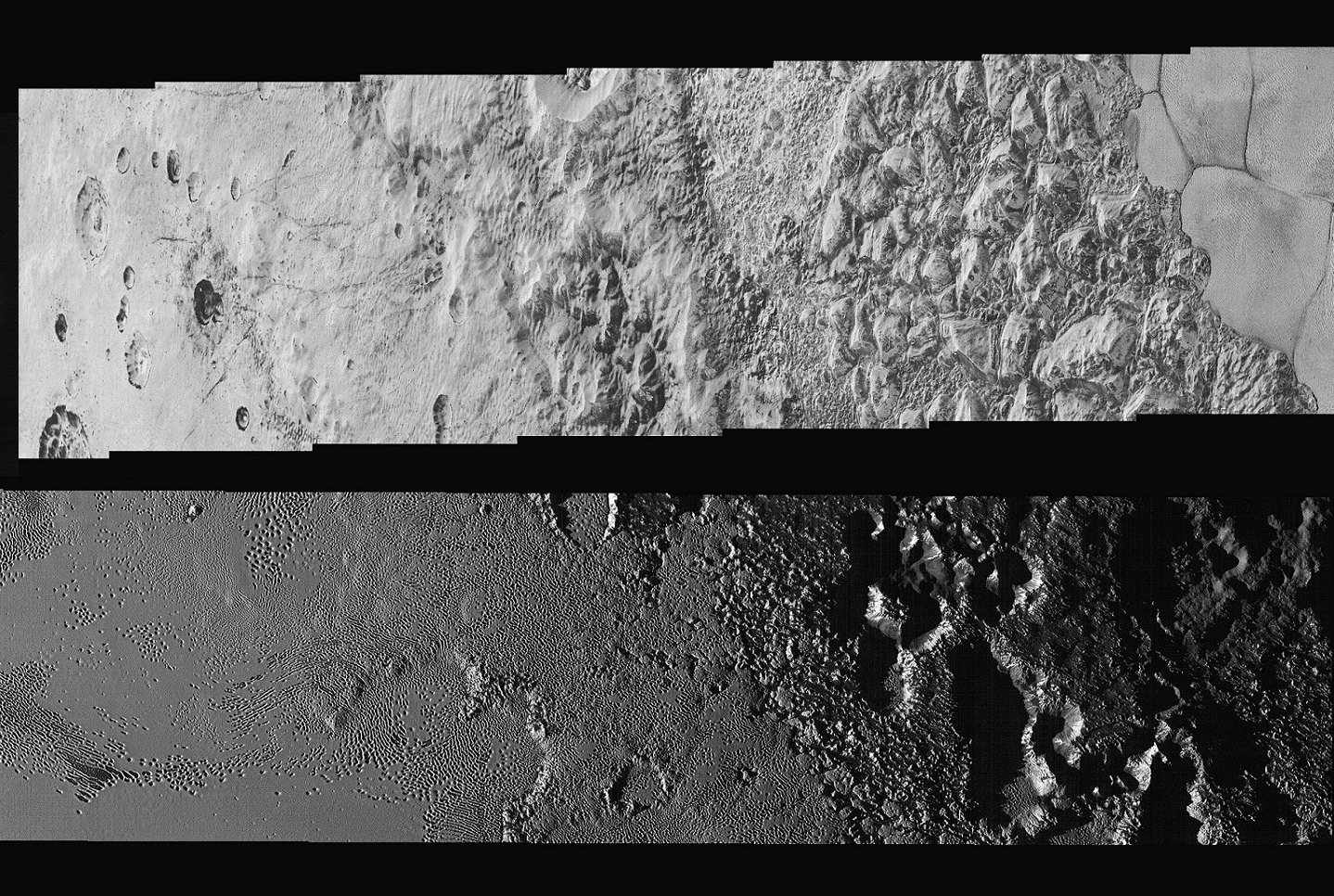
The New Horizons mission, which its conducted its historic flyby on July 14th, 2015, has yielded a wealth of scientific data about Pluto. This has included discoveries about Pluto’s size, its mountainous regions, its floating ice hills, and (more recently) how the dwarf planet interacts with solar wind – a discovery which showed that Pluto is actually more planet-like than previously thought.
But beyond revelations about the planet’s size, geography and surface features, it has also provided the most breathtaking, clear, and inspiring images of Pluto and its moons to date. And with this latest release of images taken by the New Horizon‘s Long Range Reconnaissance Imager (LORRI), people here on Earth are being treated to be the best close-up of Pluto yet.
These images, which were taken while the New Horizon’s probe was still 15,850 km (9,850 mi) away from Pluto (just 23 minutes before it made its closest approach), extend across the hemisphere that the probe was facing as it flew past. It shows features ranging from the cratered northern uplands and the mountainous regions in Voyager Terra before slicing through the flatlands of “Pluto’s Heart” – aka. Tombaugh Regio – and ending up in another stretch of rugged highlands.
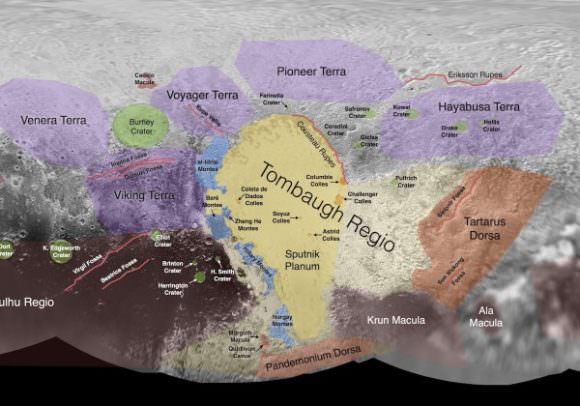
The width of the strip varies as the images pass from north to south, from more than 90 km (55 mi) across at the northern end to about 75 km (45 mi) at its southern point. The perspective also changes, with the view appearing virtually horizontal at the northern end and then shifting to an almost top-down view onto the surface by the end.
The crystal clear photographs that make up the mosaic – which have a resolution of about 80 meters (260 feet) per pixel – offer the most detailed view of Pluto’s surface ever. With this kind of clarity, NASA scientists are able to discern features that were never before visible, and learn things about the kinds of geological processes which formed them.
This includes the chaotic nature of the mountains in the northern hemisphere, and the varied nature of the icy nitrogen plains across Tombaugh Regio – which go from being cellular, to non-cellular, to a cross-bedding pattern. These features are a further indication that Pluto’s surface is the product of a combination of geological forces, such as cryovolcanism, sublimation, geological activity, convection between water and nitrogen ice, and interaction between the surface and atmosphere.
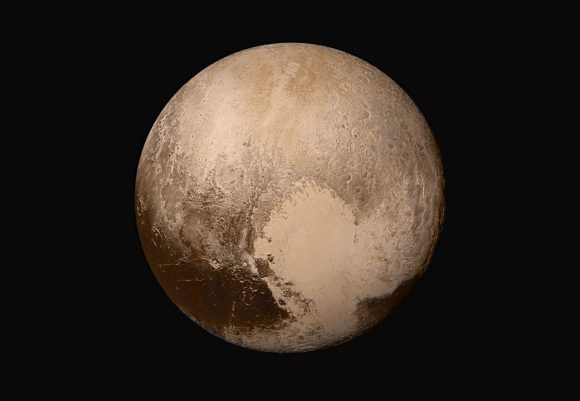
Alan Stern, the principal investigator of the New Horizons mission and the Associate Vice President of Research and Development at the Southwest Research Institute, was especially impressed with this latest find. As he told Universe Today via email:
“This new high resolution image mosaic is the complete highest resolution strip of images New Horizons obtained, and its both eye candy gorgeous and scientifically rich. Think about it— one flyby and we have this mosaic, plus so much more; no dataset like this existed on Mars until we’d flown half a dozen missions there!”
The most distant flyby in the history of space exploration, and yet we’ve obtained more from this one mission than multiple flybys were able to provide from one of Earth’s closest neighbors. Fascinating! And what’s more, new information is expected to be coming from the New Horizons probe until this coming October. To top it off, our scientists are still not finished analyzing all the information the mission collected during its flyby.
The full-resolution image can be viewed here, and be sure to enjoy this NASA video of the mosaic:
Further Reading: NASA
Take A Virtual Reality Tour Of Pluto

On July 14th, 2015, the New Horizons probe made history as it passed within 12,500 km (7,800 mi) of Pluto, thus making it the first spacecraft to explore the dwarf planet up close. And since this historic flyby, scientists and the astronomy enthusiasts here at Earth have been treated to an unending stream of breathtaking images and scientific discoveries about this distant world.
And thanks to the New York Times and the Universities Space Research Association‘s Lunar and Planetary Institute in Texas, it is now possible to take a virtual reality tour of Pluto. Using the data obtained by the New Horizon’s instruments, users will be able to experience what it is like to explore the planet using their smartphone or computer, or in 3D using a VR headset.
The seven-minute film, titled “Seeking Pluto’s Frigid Heart“, which is narrated by science writer Dennis Overbye of the New York Times – shows viewers what it was like to approach the dwarf planet from the point of the view of the New Horizon’s probe. Upon arrival, they are then able to explore Pluto’s surface, taking in 360 degree views of its icy mountains, heart-shaped plains, and largest moon, Charon.
This represents the most detailed and clear look at Pluto to date. A few decades ago, the few maps of Pluto we had were the result of close observations that measured changes in the planet’s total average brightness as it was eclipsed by its largest moon, Charon. Computer processing yielded brightness maps, which were very basic by modern standards.
In the early 2000s, images taken by the Hubble Space Telescope were processed in order to create a more comprehensive view. Though the images were rather undetailed, they offered a much higher resolution view than the previous maps, allowing certain features – like Pluto’s large bright spots and the dwarf planet’s polar regions – to be resolved for the first time.
However, with the arrival of the New Horizons mission, human beings have been finally treated to a close-up view of Pluto and its surface. This included Pluto’s now-famous heart-shaped plains, which were captured by the probe’s Long Range Reconnaissance Imager (LORRI) while it was still several days away from making its closest approach.
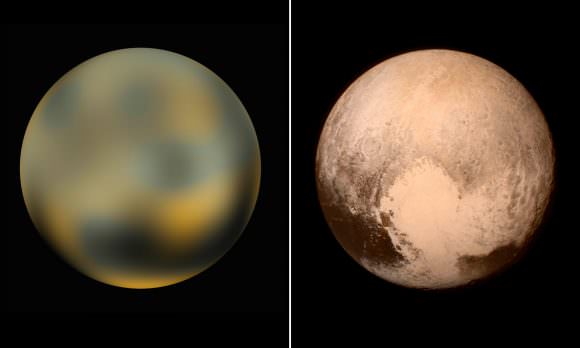
This was then followed-up by very clear images of its surface features and atmosphere, which revealed floating ice hills, mountains and icy flow plains, and surface clouds composed of methane and tholins. From all of these images, we now know what the surface of this distant world looks like with precision. All of this has allowed scientists here at Earth to reconstruct, in stunning detail, what it would be like to travel to Pluto and stand on its surface.
Amazingly, only half of New Horizon’s images and measurements have been processed so far. And with fresh data expected to arrive until this coming October, we can expect that scientists will be working hard for many years to analyze it all. One can only imagine what else they will learn about this mysterious world. And one can only hope that any news findings will be uploaded to the app (and those like it)!
New Horizons Sends Back First Science On Distant Kuiper Belt Object
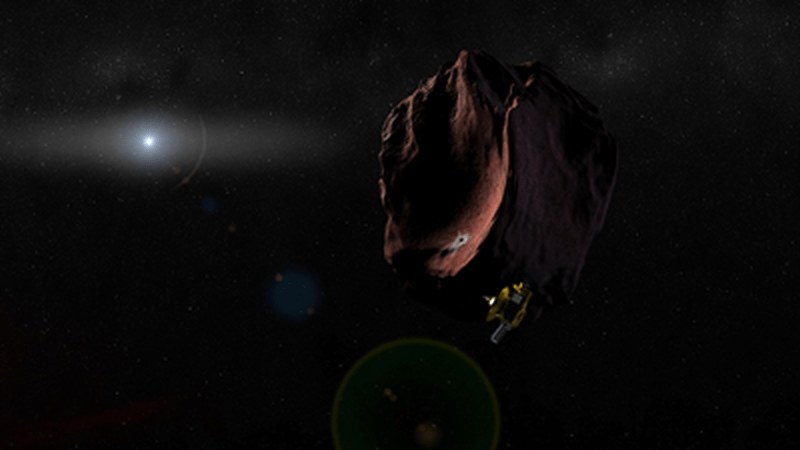
Even the most curmudgeonly anti-space troll has to admit that the New Horizons mission to Pluto has been an overwhelming success.
It’s not like New Horizons discovered life or anything, but it did bring an otherwise cold, distant lump to life for humanity. Vivid images and detailed scientific data revealed Pluto as a dynamic, changing world, with an active surface and an atmosphere. And we haven’t even received all of the data from New Horizons’ mission to Pluto yet.
Fresh off its historic visit to Pluto, New Horizons is headed for the Kuiper Belt, and just sent back its first science on one of the denizens of the distant belt of objects. The target in this case is 1994 JR1, a 145 km (90 mi.) wide Kuiper Belt Object (KBO). that orbits the Sun at a distance greater than 5 billion km. (3 billion mi.) New Horizons has now observed 1994 JR1 twice, and the team behind the mission has garnered new insights into this KBO based on these observations.
The spacecraft’s Long Range Reconnaissance Imager (LORRI) captured images of 1994 JR1 on April 7th-8th from a distance of 111 million km. (69 million mi.). That’s far closer than the images New Horizons captured in November 2015 from a distance of 280 million km (170 million miles).
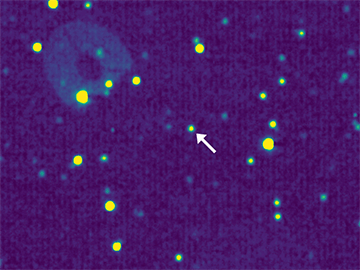
New Horizons science team member Simon Porter, of the Southwest Research Institute (SwRI) in Boulder Colorado, commented on the importance of these images. “Combining the November 2015 and April 2016 observations allows us to pinpoint the location of JR1 to within 1,000 kilometers (about 600 miles), far better than any small KBO,” Porter said.
Porter added that this accurate measurement of the KBO’s orbit allows New Horizons science team members to quash the idea that JR1 is a quasi-satellite of Pluto.
The team was also able to determine, by measuring the light reflected from the surface, that JR1’s rotational period is only 5.4 hours. That’s fast for a KBO. John Spencer, another New Horizons science team member from SwRI, said “This is all part of the excitement of exploring new places and seeing things never seen before.”

Credit: NASA/Johns Hopkins University Applied Physics Laboratory/Southwest Research Institute
KBOs are ancient remnants of the early days of the Solar System. Whereas the inner regions of the Solar System were largely swept clean as the planets formed, the Kuiper Belt remained mostly as it is, untouched by the gravity of the planets.
There are trillions of objects in this cold, distant part of the Solar System. The Kuiper Belt itself spans a distance that is 30 to 50 times greater than the distance from the Earth to the Sun. It’s similar to the asteroid belt between Mars and Jupiter, but Kuiper Belt objects are icy, whereas asteroid belt objects are rocky, for the most part.
The New Horizons team has requested a mission extension, and if that extension is approved, the target is already chosen. In August 2015, NASA selected the KBO 2014 MU69, which resides in an orbit almost a billion miles beyond Pluto. There were two potential destinations for the spacecraft after it departed Pluto, and 2014 MU69 was recommended by the New Horizons team, and chosen by NASA.
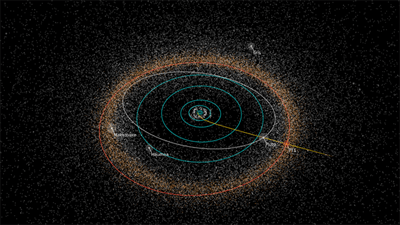
Choosing New Horizons’ next target early was important for fuel use. Fuel conservation allows the spacecraft to perform the maneuvers necessary to reach 2014 MU69. If all goes well, New Horizons should reach its next target by January 2019.
According to Alan Stern, New Horizons Principal Investigator, there are good reasons to visit 2014 MU69. “2014 MU69 is a great choice because it is just the kind of ancient KBO, formed where it orbits now, that the Decadal Survey desired us to fly by,” he said. “Moreover, this KBO costs less fuel to reach [than other candidate targets], leaving more fuel for the flyby, for ancillary science, and greater fuel reserves to protect against the unforeseen.”
The Decadal Survey in 2003 strongly recommended that flybys of Pluto and small KBOs should be conducted. The KBO is an unexplored region, and these flybys will allow us to sample the diversity of objects in the belt.
If New Horizons makes it to its next target, 2014 MU69, and delivers the types of results it has so far in its journey, it will be an unprecedented success. The kind of success that will make it harder and harder to be a curmudgeonly anti-space troll.
Wait. Who am I kidding.
Haters gonna hate.
Scientists Assemble Fresh Global Map of Pluto Comprising Sharpest Flyby Images
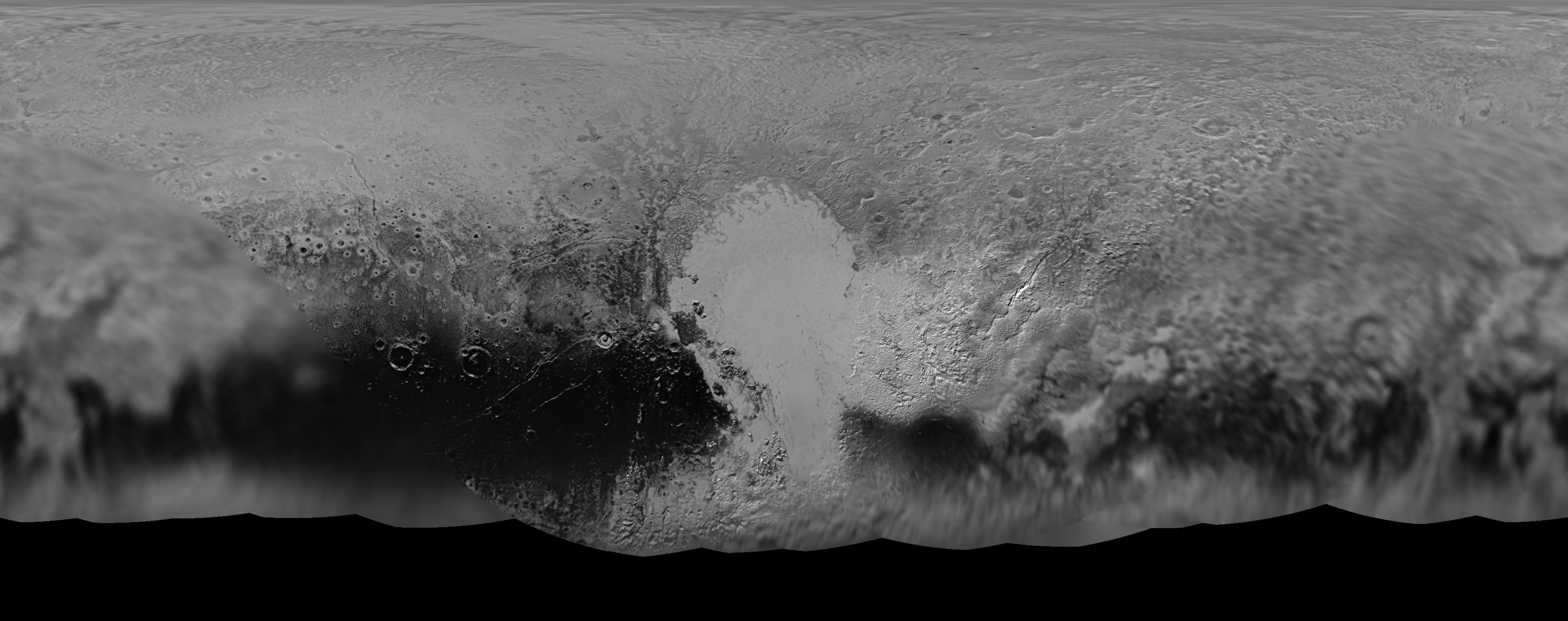

The science team leading NASA’s New Horizons mission that unveiled the true nature of Pluto’s long hidden looks during the history making maiden close encounter last July, have published a fresh global map that offers the sharpest and most spectacular glimpse yet of the mysterious, icy world.
The newly updated global Pluto map is comprised of all the highest resolution images transmitted back to Earth thus far and provides the best perspective to date.
Click on the lead image above to enjoy Pluto revealed at its finest thus far. Click on this link to view the highest resolution version.
Prior to the our first ever flyby of the Pluto planetary system barely 8 months ago, the planet was nothing more than a fuzzy blob with very little in the way of identifiable surface features – even in the most powerful telescopic views lovingly obtained from the Hubble Space Telescope (HST).
Dead center in the new map is the mesmerizing heart shaped region informally known as Tombaugh Regio, unveiled in all its glory and dominating the diminutive world.
The panchromatic (black-and-white) global map of Pluto published by the team includes the latest images received as of less than one week ago on April 25.
The images were captured by New Horizons’ high resolution Long Range Reconnaissance Imager (LORRI).
The science team is working on assembling an updated color map.
During its closest approach at approximately 7:49 a.m. EDT (11:49 UTC) on July 14, 2015, the New Horizons spacecraft swoop to within about 12,500 kilometers (nearly 7,750 miles) of Pluto’s surface and about 17,900 miles (28,800 kilometers) from Charon, the largest moon.
The map includes all resolved images of Pluto’s surface acquired in the final week of the approach period ahead of the flyby starting on July 7, and continuing through to the day of closest approach on July 14, 2015 – and transmitted back so far.
The pixel resolutions are easily seen to vary widely across the map as you scan the global map from left to right – depending on which Plutonian hemisphere was closest to the spacecraft during the period of close flyby.
They range from the highest resolution of 770 feet (235 meters), at center, to 18 miles (30 kilometers) at the far left and right edges.
The Charon-facing hemisphere (left and right edges of the map) had a pixel resolution of 18 miles (30 kilometers).
“This non-encounter hemisphere was seen from much greater range and is, therefore, in far less detail,” noted the team.
However the hemisphere facing New Horizons during the spacecraft’s closest approach on July 14, 2015 (map center) had a far higher pixel resolution reaching to 770 feet (235 meters).
Coincidentally and fortuitously the spectacularly diverse terrain of Tombaugh Regio and the Sputnik Planum area of the hearts left ventricle with ice flows and volcanoes, mountains and river channels was in the region facing the camera and sports the highest resolution imagery.
See below a newly released shaded relief map of Sputnik Planum.

“Sputnik Planum – shows that the vast expanse of the icy surface is on average 2 miles (3 kilometers) lower than the surrounding terrain. Angular blocks of water ice along the western edge of Sputnik Planum can be seen “floating” in the bright deposits of softer, denser solid nitrogen,” according to the team.
Even more stunning images and groundbreaking data will continue streaming back from New Horizons until early fall, across over 3 billion miles of interplanetary space.
Thus the global map of Pluto will be periodically updated.
Its taking over a year to receive the full complement of some 50 gigabits of data due to the limited bandwidth available from the transmitter on the piano-shaped probe as it hurtled past Pluto, its largest moon Charon and four smaller moons.
Pluto is the last planet in our solar system to be visited in the initial reconnaissance of planets by spacecraft from Earth since the dawn of the Space Age.
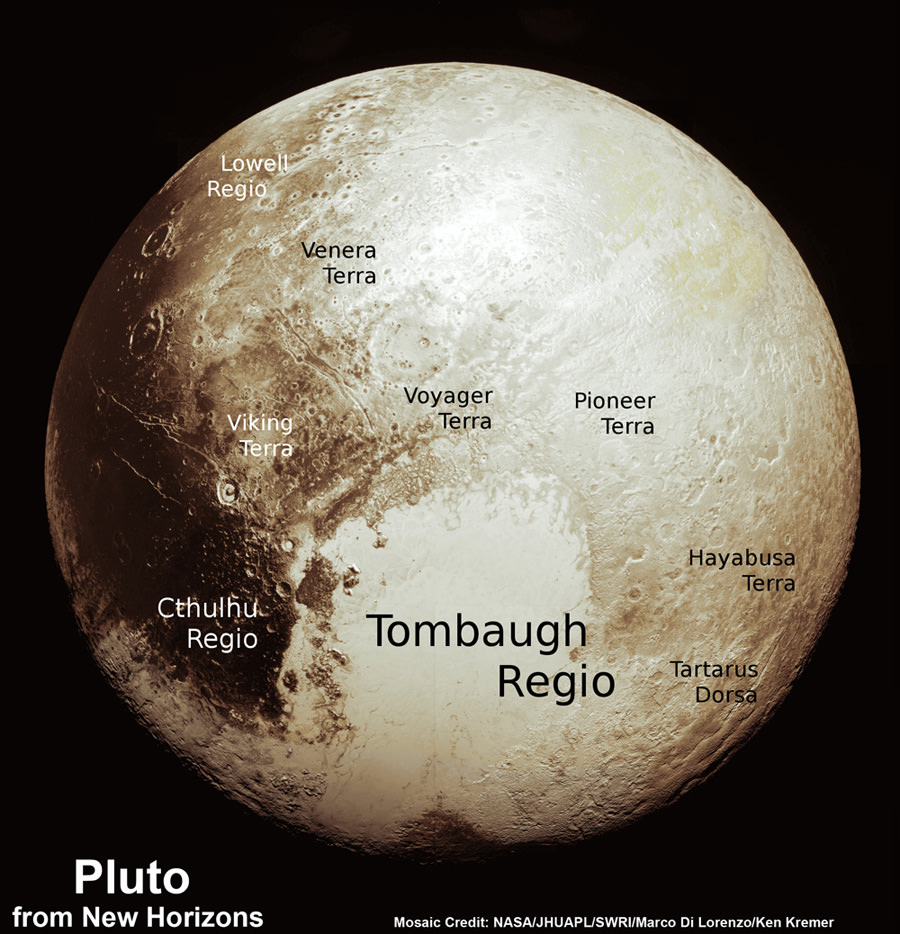
New Horizons remains on target to fly by a second Kuiper Belt Object (KBO) on Jan. 1, 2019 – tentatively named PT1, for Potential Target 1. It is much smaller than Pluto and was recently selected based on images taken by NASA’s Hubble Space Telescope.
Stay tuned here for Ken’s continuing Earth and planetary science and human spaceflight news.
How Do We Terraform Jupiter’s Moons?
Continuing with our “Definitive Guide to Terraforming“, Universe Today is happy to present to our guide to terraforming Jupiter’s Moons. Much like terraforming the inner Solar System, it might be feasible someday. But should we?
Fans of Arthur C. Clarke may recall how in his novel, 2010: Odyssey Two (or the movie adaptation called 2010: The Year We Make Contact), an alien species turned Jupiter into a new star. In so doing, Jupiter’s moon Europa was permanently terraformed, as its icy surface melted, an atmosphere formed, and all the life living in the moon’s oceans began to emerge and thrive on the surface.
As we explained in a previous video (“Could Jupiter Become a Star“) turning Jupiter into a star is not exactly doable (not yet, anyway). However, there are several proposals on how we could go about transforming some of Jupiter’s moons in order to make them habitable by human beings. In short, it is possible that humans could terraform one of more of the Jovians to make it suitable for full-scale human settlement someday.
Continue reading “How Do We Terraform Jupiter’s Moons?”
Gravity Waves On Pluto?
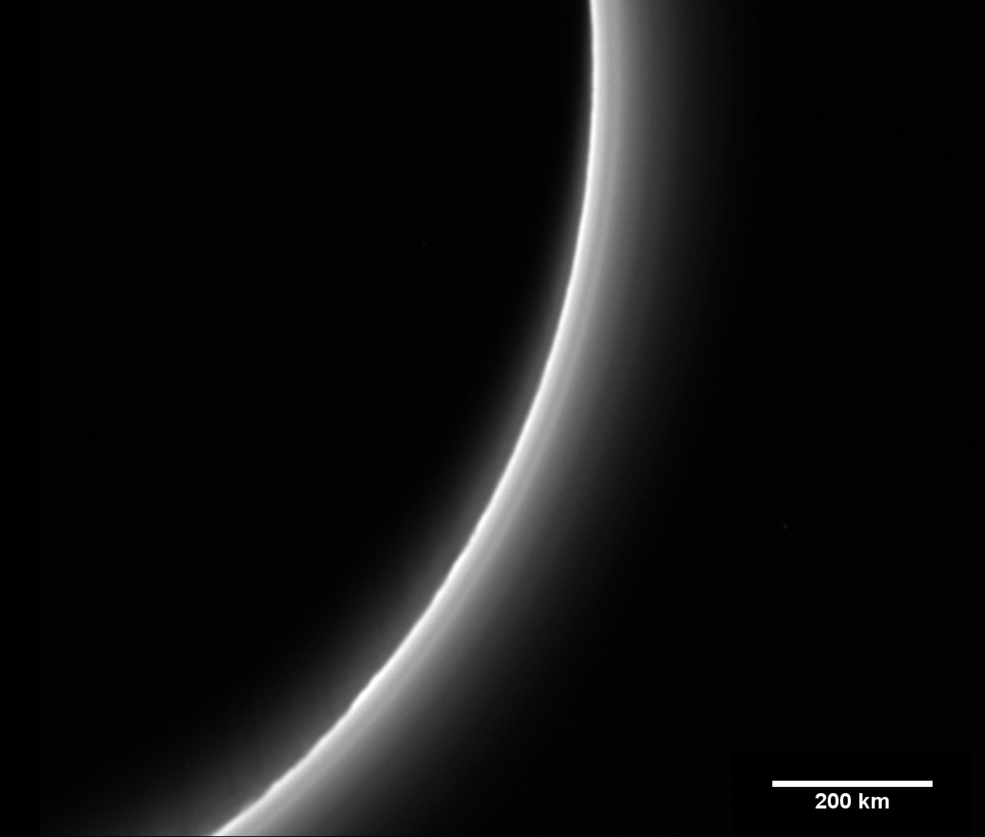
New Horizons’ historic journey to Pluto and beyond continues to provide surprises. As data from the spacecraft’s close encounter with Pluto and its moons arrives at Earth, scientists are piecing together an increasingly intriguing picture of the dwarf planet. The latest discovery is centred around Pluto’s atmosphere, and what are called ‘atmospheric gravity waves.’
Atmospheric gravity waves are a different phenomenon than the gravity waves that were detected for the first time in February, 2016. Those gravity waves are ripples in the fabric of space time, first predicted by Albert Einstein back in 1916. After years of searching, the LIGO instrument detected gravity waves that resulted from two black holes colliding. The discovery of what you might call ‘Einsteinian Gravity Waves’ may end up revolutionizing astronomy.
New Horizons has revealed surprise after surprise in its study of Pluto. Its atmosphere has turned out to be much more complex than anybody expected. It’s composed of 90% nitrogen, with extensive haze layers. Scientists have discovered that Pluto’s atmosphere can vary in brightness depending on viewpoint and illumination, while the vertical structure of the layered haze remains unchanged.
Scientists studying the New Horizons’ data think that atmospheric gravity waves, also called buoyancy waves, are responsible. Atmospheric gravity waves are known to exist on only two other planets; Earth and Mars. They are typically caused by wind flowing over obstructions like mountain ranges.
The layers in Pluto’s atmosphere, and their varying brightness, are most easily seen when they are backlit by the Sun. This was the viewpoint New Horizons had when it captured these images on its departure from Pluto on July 14, 2015. The spacecraft’s Long Range Reconnaissance Imager (LORRI) captured them, using time intervals of 2 to 5 hours. What they show is the brightness of the layers changing by 30% without any change in their height above the surface of the planet.
LORRI, as its name suggests, is a long range image capture instrument. It also captures high resolution geologic data, and was used to map Pluto’s far side. The principal investigator for LORRI is Andy Cheng, from the Applied Physics Laboratory at Johns Hopkins University, in Maryland. “Pluto is simply amazing,” said Andy Cheng. “When I first saw these images and the haze structures that they reveal, I knew we had a new clue to the nature of Pluto’s hazes. The fact that we don’t see the haze layers moving up or down will be important to future modelling efforts.”
Overall, Pluto and its system of moons has turned out to be a much more dynamic place than previously thought. A geologically active landscape, possible ice volcanoes, eroding cliffs made of methane ice, and more, have woken us up to Pluto’s complexity. But its atmosphere has turned out to be just as complex and puzzling.
New Horizons has departed the Pluto system now, and is headed for the Kuiper Belt. The Kuiper Belt is considered a relic of the early Solar System. New Horizons will visit another icy world there, and hopefully continue on to the edge of the heliosphere, the same way the Voyage probes have. New Horizons has enough energy to last until approximately the mid-2030’s, if all goes well.
NASA Invests In Radical Game-Changing Concepts For Exploration
Every year, the NASA Innovative Advanced Concepts (NIAC) program puts out the call to the general public, hoping to find better or entirely new aerospace architectures, systems, or mission ideas. As part of the Space Technology Mission Directorate, this program has been in operation since 1998, serving as a high-level entry point to entrepreneurs, innovators and researchers who want to contribute to human space exploration.
This year, thirteen concepts were chosen for Phase I of the NIAC program, ranging from reprogrammed microorganisms for Mars, a two-dimensional spacecraft that could de-orbit space debris, an analog rover for extreme environments, a robot that turn asteroids into spacecraft, and a next-generation exoplanet hunter. These proposals were awarded $100,000 each for a nine month period to assess the feasibility of their concept.
Continue reading “NASA Invests In Radical Game-Changing Concepts For Exploration”
New Horizons Did Amazing Work Before Even Arriving At Pluto
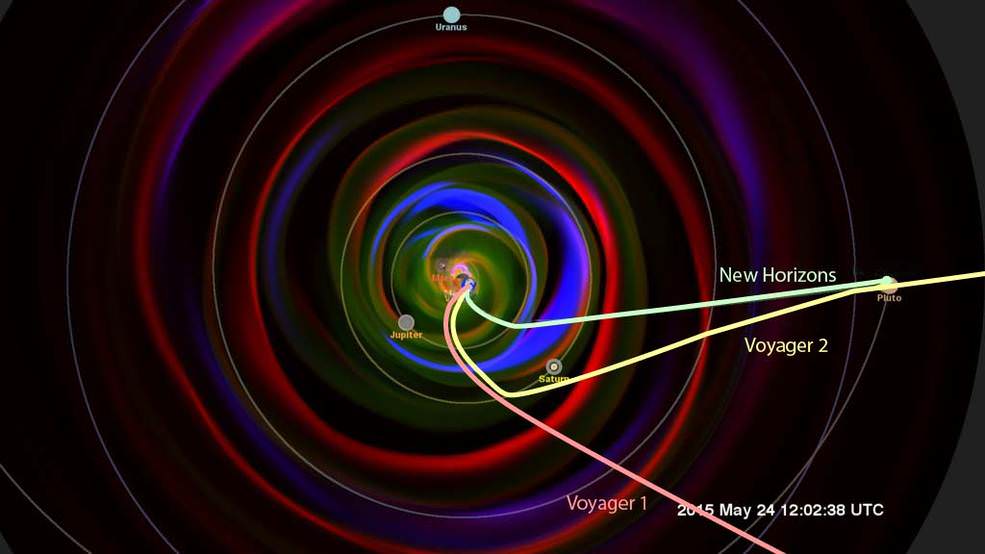
Anybody with an ounce of intellectual curiosity (and an internet connection) has seen the images of Pluto and its system taken by the New Horizons probe. The images and data from New Horizons have opened the door to Pluto’s atmosphere, geology, and composition. But New Horizons wasn’t entirely dormant during its 9 year, billion-plus mile journey to Pluto.
New Horizons returned 3 years worth of data on the solar wind that sweeps through the near-emptiness of space. The solar wind is the stream of particles that is released from the upper atmosphere of the Sun, called the corona. The Sun’s solar wind is what creates space weather in our solar system, and the wind itself varies in temperature, speed, and density.
The solar wind data from New Horizons, which NASA calls an “unprecedented set of observations,” is filling in a gap in our knowledge. Observatories like the Solar Dynamics Observatory (SDO) and the Solar and Heliospheric Observatory (SOHO) are studying the Sun up close, and the Voyager probes have sampled the solar wind near the edge of the heliosphere, where the solar wind meets interstellar space, but New Horizons is giving us our first look at the solar wind in Pluto’s region of space.
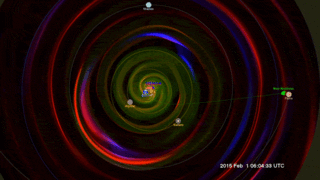
This solar wind data should shed some light on a number of things, including the dangerous radiation astronauts face when in space. There is a type of particle with extreme energy levels called anomalous cosmic rays. When travelling close to Earth, these high-velocity rays can be a serious radiation hazard to astronauts.
The data from New Horizons reveals particles that pick up an acceleration boost, which makes them exceed their initial speed. It’s thought that these particles could be the precursors to anomalous cosmic rays. A better understanding of this might lead to a better way to protect astronauts.
These same rays have other effects further out in space. It looks like they are partly responsible for shaping the edge of the heliosphere; the region in space where the solar wind meets the interstellar medium.
New Horizons has also told us something about the structure of the solar wind the further it travels from the Sun. Close to the Sun, phenomena like coronal mass ejections (CMEs) have a clearly discernible structure. And the differences in the solar wind, in terms of velocity, density, and temperature, are also discernible. They’re determined by the region of the Sun they came from. New Horizons found that far out in the solar system, these structures have changed.
“At this distance, the scale size of discernible structures increases, since smaller structures are worn down or merge together,” said Heather Elliott, a space scientist at the Southwest Research Institute in San Antonio, Texas, and the lead author of a paper to be published in the Astrophysical Journal. “It’s hard to predict if the interaction between smaller structures will create a bigger structure, or if they will flatten out completely.”
The Voyager probes measured the solar wind as they travelled through our Solar System into the interstellar medium. They’ve told us a lot about the solar wind in the more distant parts of our system, but their instruments aren’t as sensitive and advanced as New Horizons’. This second data set from New Horizons is helping to fill in the blanks in our knowledge.
New Horizons Snaps Amazing 3-D View of Pluto’s Mysterious ‘Bladed’ Terrain
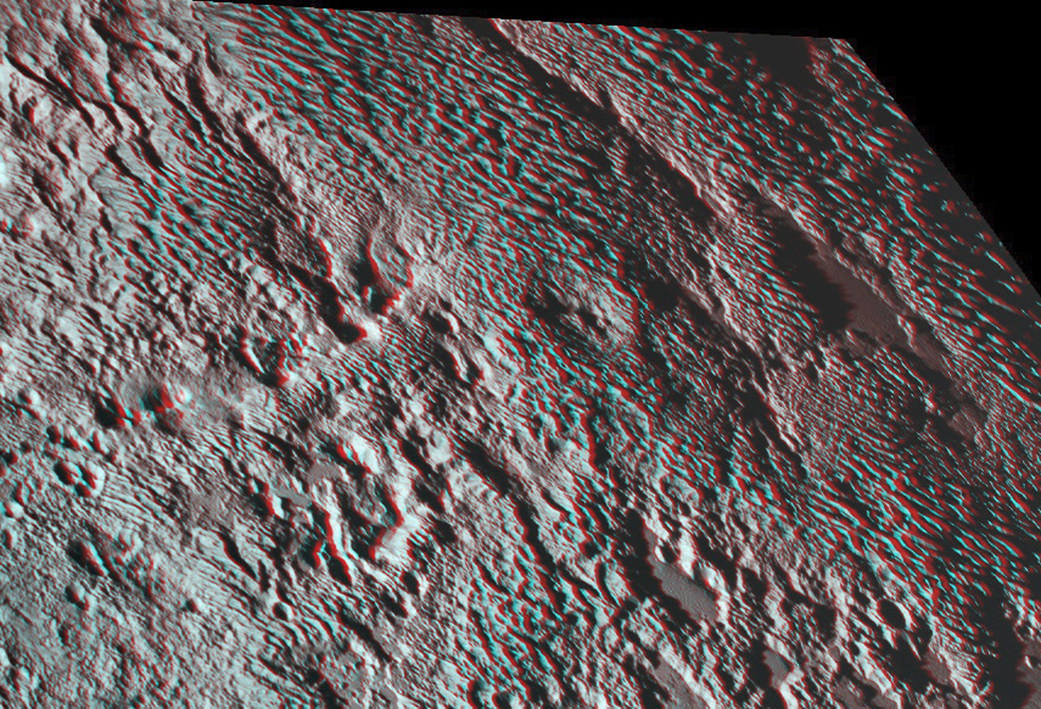

It’s time to whip out your 3-D glasses to enjoy and scrutinize the remarkable detail of spectacular terrain revealed in a new high resolution stereo image of Pluto – King of the Kuiper Belt! – taken by NASA’s New Horizons spacecraft.
The amazing new stereo Plutonian image focuses on an area dominated by a mysterious feature that geologists call ‘bladed’ terrain – seen above – and its unlike anything seen elsewhere in our solar system.
Its located in a broad region of rough highlands informally known as Tartarus Dorsa – situated to the east of the Pluto’s huge heart shaped feature called Tombaugh Regio. The best resolution is approximately 1,000 feet (310 meters).
The stereo view combines a pair of images captured by New Horizons Ralph/Multispectral Visible Imaging Camera (MVIC) science instruments. They were taken about 14 minutes apart on during history making first ever flyby of the Pluto planetary system on July 14, 2015.
The first was taken when New Horizons was 16,000 miles (25,000 kilometers) away from Pluto, the second when the spacecraft was 10,000 miles (about 17,000 kilometers) away.
The blades align from north to south, typically reach up to about 550 yards (500 meters) high and are spaced about 2-4 miles (3-5 kilometers). Thus they are among the planets steepest features. They are “perched on a much broader set of rounded ridges that are separated by flat valley floors,” according to descriptions from the New Horizons science team.

Mission scientists have also noted that the bladed terrain has the texture of “snakeskin” owing to their “scaly raised relief.”
In the companion global image from NASA (below), the bladed terrain is outlined in red and shown to extend quite far to the east of Tombaugh Regio.
The composite image was taken on July 13, 2015, the day before the closest approach flyby, when the probe was farther away thus shows lower resolution. It combines a pair of images from two of the science instruments – a Ralph/Multispectral Visible Imaging Camera (MVIC) color scan and an image from the Long Range Reconnaissance Imager (LORRI).
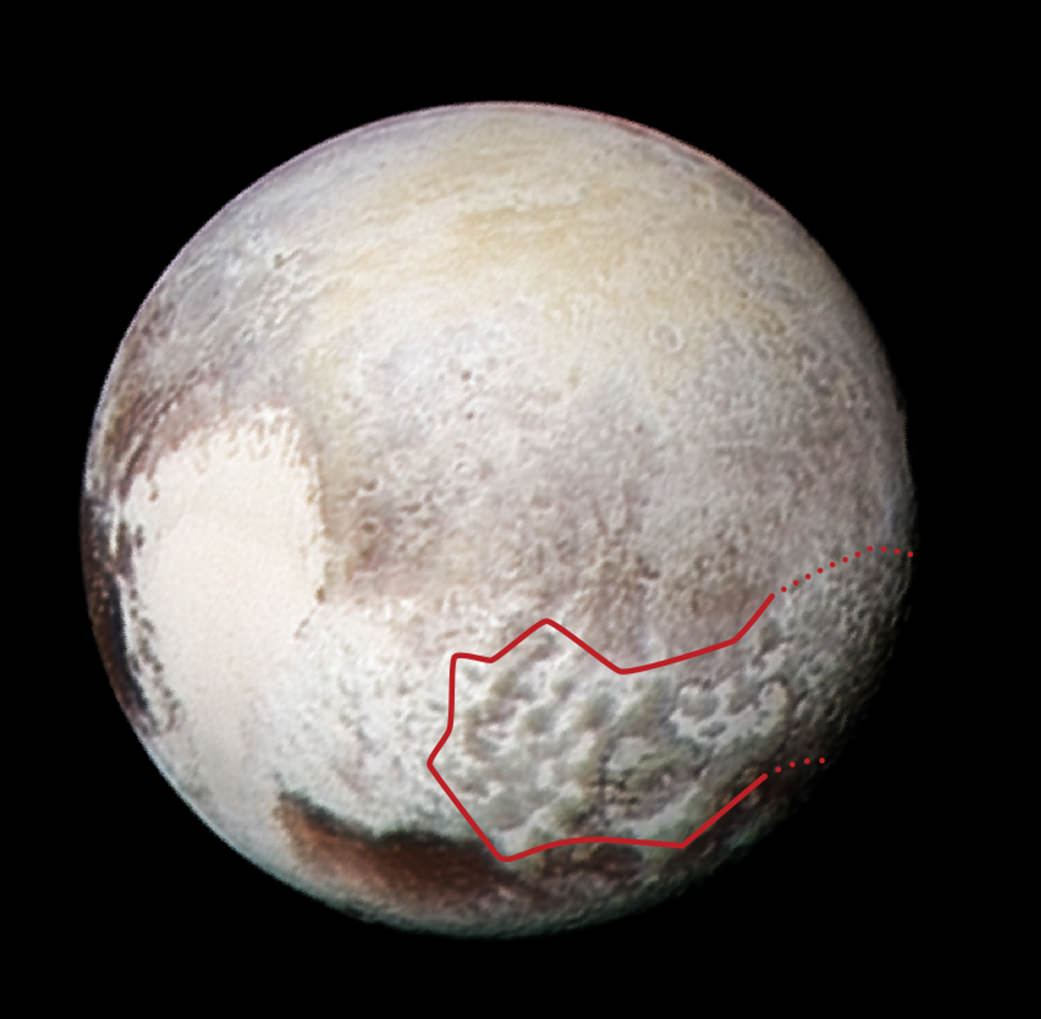
Credits: NASA/JHUAPL/SwRI
The MVIC scan was taken from a range of 1 million miles (1.6 million kilometers), at a resolution of 20 miles (32 kilometers) per pixel. The corresponding LORRI image was obtained from roughly the same range, but has a higher spatial resolution of 5 miles (8 kilometers) per pixel, say officials.
Scientists have developed several possible theories about the origins of the bladed terrain, including erosion from evaporating ices or deposition of methane ices.
Measurements from the Linear Etalon Imaging Spectral Array (LEISA) instrument reveal that that this region “is composed of methane (CH4) ice with a smattering of water,” reports New Horizons researcher Orkan Umurhan.
He speculates that “the material making up the bladed terrain is a methane clathrate. A clathrate is a structure in which a primary molecular species (say water, or H2O) forms a crystalline ‘cage’ to contain a guest molecule (methane or CH4, for example).”
But the question of whether that methane ice is strong enough to maintain the steep walled snakeskin features, will take much more research to determine a conclusive answer.
Umurhan suggests that more research could help determine if the “methane clathrates in the icy moons of the outer solar system and also in the Kuiper Belt were formed way back before the solar system formed – i.e., within the protosolar nebula – potentially making them probably some of the oldest materials in our solar system.”
Pluto continues to amaze and surprise us as the data streams back to eagerly waiting scientists on Earth over many more months to come – followed by years and decades of painstaking analysis.

During New Horizons flyby on July 14, 2015, it discovered that Pluto is the biggest object in the outer solar system and thus the ‘King of the Kuiper Belt.”
The Kuiper Belt comprises the third and outermost region of worlds in our solar system.
Pluto is the last planet in our solar system to be visited in the initial reconnaissance of planets by spacecraft from Earth since the dawn of the Space Age.
New Horizons remains on target to fly by a second Kuiper Belt Object (KBO) on Jan. 1, 2019 – tentatively named PT1, for Potential Target 1. It is much smaller than Pluto and was recently selected based on images taken by NASA’s Hubble Space Telescope.
Stay tuned here for Ken’s continuing Earth and planetary science and human spaceflight news.
………….
Learn more about NASA Mars rovers, Orion, SLS, ISS, Orbital ATK, ULA, SpaceX, Boeing, Space Taxis, NASA missions and more at Ken’s upcoming outreach events:
Apr 9/10: “NASA and the Road to Mars Human Spaceflight programs” and “Curiosity explores Mars” at NEAF (NorthEast Astronomy and Space Forum), 9 AM to 5 PM, Suffern, NY, Rockland Community College and Rockland Astronomy Club – http://rocklandastronomy.com/neaf.html
Apr 12: Hosting Dr. Jim Green, NASA, Director Planetary Science, for a Planetary sciences talk about “Ceres, Pluto and Planet X” at Princeton University; 7:30 PM, Amateur Astronomers Assoc of Princeton, Peyton Hall, Princeton, NJ – http://www.princetonastronomy.org/
Apr 17: “NASA and the Road to Mars Human Spaceflight programs”- 1:30 PM at Washington Crossing State Park, Nature Center, Titusville, NJ – http://www.state.nj.us/dep/parksandforests/parks/washcros.html



